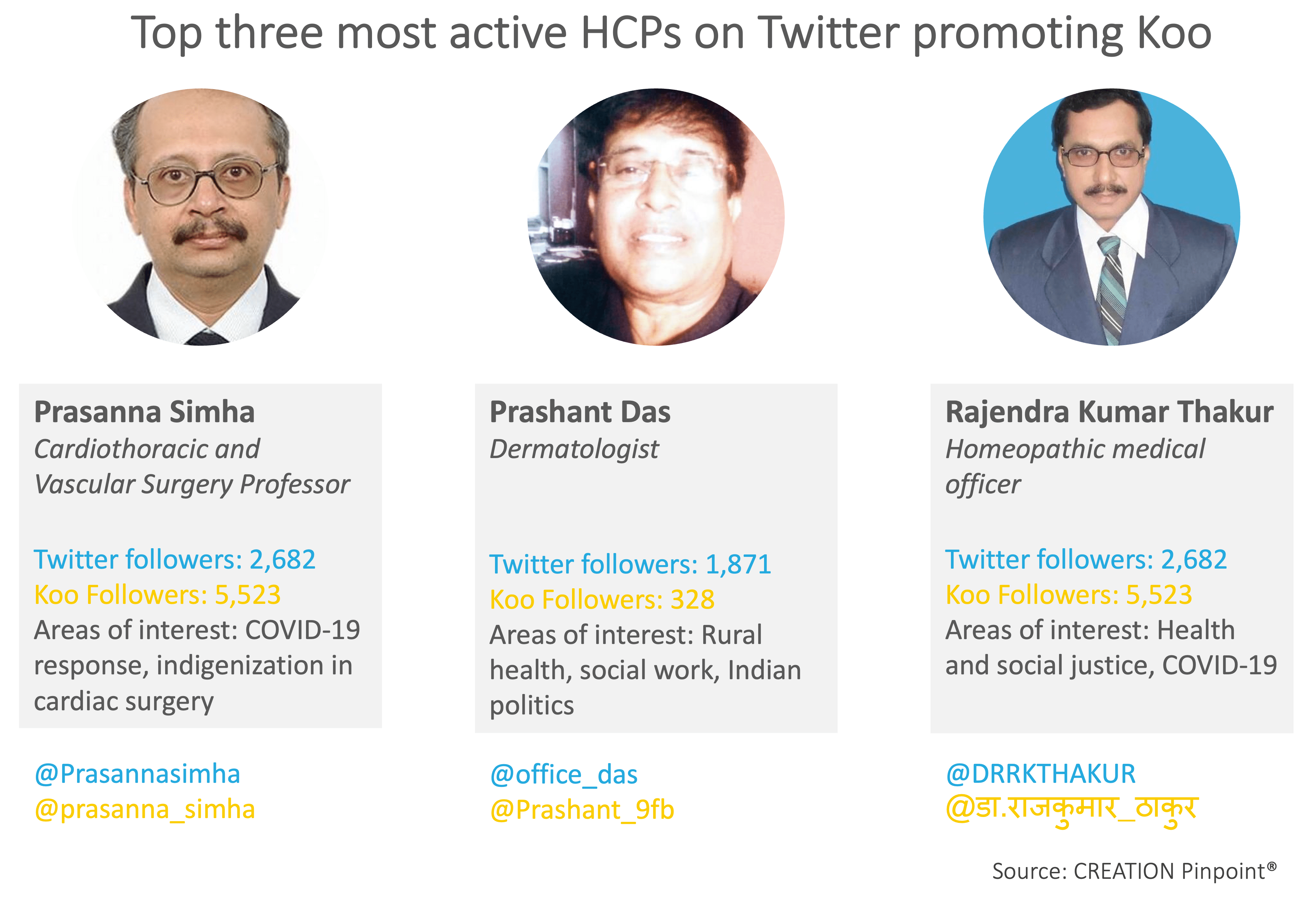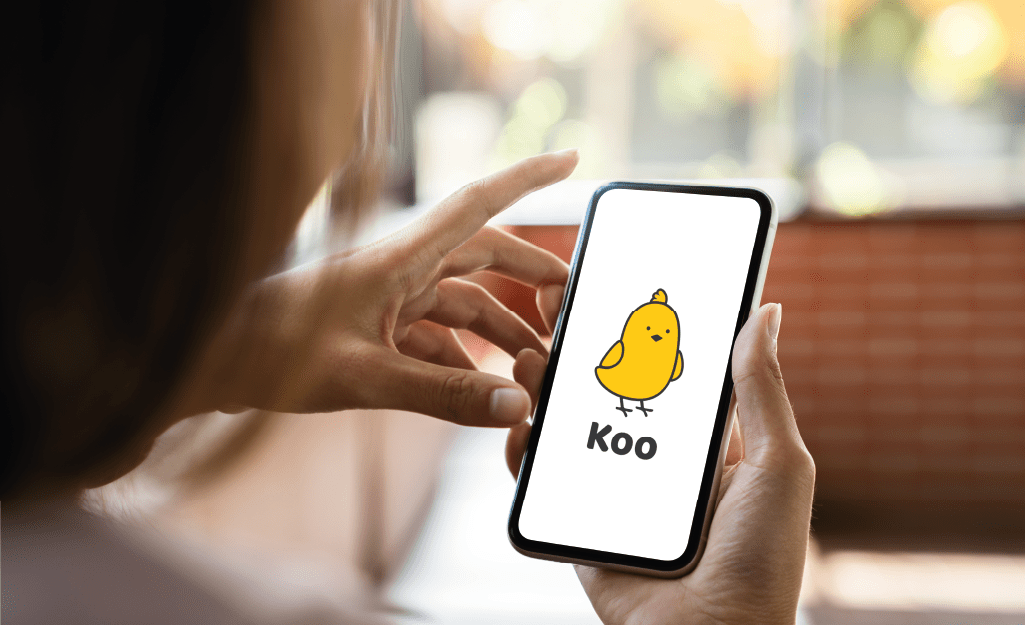Since its launch in March 2020, Koo, a home-grown micro-blogging app that focuses on local Indian languages, is targeting to cross 100 million downloads in two years before monetising the platform. The platform has gained just over 20 million downloads so far and doesn’t look like stopping as it aims to soar past Twitter which has 25 million users within India.
One of the major contributing factors to the rise of Koo is that the platform promotes multi-language expression – enabling people to converse in 10 languages: Hindi, Marathi, Kannada, Tamil, Telugu, Assamese, Gujarati, Punjabi, Bengali, and English. Furthermore, the platform’s innovative features allow for the real-time translation of a message into multiple languages, while retaining the context and sentiment attached to the original message. This means Koo’s users are able to converse with people in their native language without the pressure of posting in English (Hindi is the fourth most spoken language in the world with 342 million native speakers, but is only the 20th most used language on Twitter). Add to this the fact India is home to 23 official languages, it is unsurprising that a social media platform native to India, with improved translations, would perform well within the country.
With the tracking of digital behaviours and the rise of Digital Opinion Leaders it is clear to see the web is no longer a place where the aim is to just consume content and information. It is now a place where people participate; a dynamic space that is constantly being shaped by our own actions and contributions. Unsurprisingly then, social network sites, purpose-built to facilitate social interaction, grew to become amongst the most used sites on the web.
Could other non-English speaking nations learn lessons from the success of Koo? As humans are driven by the intrinsic need to express, engage and converse online in a language of their choice, could a rise in local social media platforms arise?
Within these questions it is also apparent that in all corners of the social media world, healthcare professionals (HCPs) are able to use different platforms to create communities with the shared intention of educating and informing a larger audience than was previously thought possible. This has been seen across platforms, including audio-chat app Clubhouse, which saw a large uptake of medical education, TikTok, with some HCPs gaining millions of followers, and also the use of YouTube, for HCPs addressing misinformation. So how have HCPs imposed themselves on Koo?
Out with the old, in with the Koo
February 2021 saw a surge of HCPs joining Koo and sharing this information on their other social media profiles, notably Twitter, promoting their new accounts and asking their followers to join them. HCPs posted over 600 times on Twitter in February 2021 about joining Koo and the possibilities the app would open up. HCPs were excited to join their compatriots on the app and discuss all manner of subjects, including healthcare, in their native languages.
I am now on #Koo also, the #MakeInIndia micro-blogging platform.
Follow me @prakashjavadekar on #KooApp https://t.co/YFMpR5CNKA pic.twitter.com/QrQRHxcOrZ
— Prakash Javadekar (Modi Ka Parivar) (@PrakashJavdekar) February 12, 2021
One of the driving forces behind the rise of Koo was the government support it received following the public spat between the Ruling Bharatiya Janata Party (BJP) and Twitter. Many people in India, including HCPs, were quick to renounce their allegiances to Twitter and saw the rising ‘home grown’ micro-blogging app as the perfect replacement for their social media free speech.
This is my profile in KOO app do follow me there.
I have some authentic information that Govt of India & all its departments are switching here.https://t.co/zJrcNPJrHX
— DR JAGADISH J HIREMATH (@Kaalateetham) February 8, 2021
However, some HCPs have been able to maintain a healthy level of posting and engagement on both Twitter and Koo and have not seen a need for the platforms to do battle. As has previously been stated, HCPs are able to create content across different social media platforms for their audience, why should the addition of Koo be any different?
COVID status. We will reach 10 million vaccinations today or tomorrowhttps://t.co/IbaqIZO6Es
— Prasannasimha🇮🇳 (@Prasannasimha) February 18, 2021
Whilst a relationship between Twitter and Koo may or may not be possible, it is worth noting the rising popularity of the latter and its uptake from the public in India. How much prouder are we of something and have a desire for said thing to succeed when it is something we can identify with? Football fans in England may well be accustomed to the songs of teams Tottenham Hotspur and Liverpool who sing ‘Harry Kane, he’s one of our own’ and ‘the Scouser in our team’ respectively of their ‘home-grown talents, Harry Kane and Trent Alexander-Arnold. The same can be said for HCPs and the general public of India who are proud of Koo and have stated a motive for using the app is that it is a social platform built in India, for India.
Koo crosses 1 crore users!
We have built a transparent & happy space for Indians to express themselves and connect with each other.
Proud of building for India, from India and one day for the world!#JoinIndiasDigitalRevolution #MakeIndiaProud #MakeIndiaWin pic.twitter.com/fz4hzFH11w
— Mayank Bidawatka (@mayankbidawatka) August 25, 2021
Look Koo’s talking
Having coined the term Digital Opinion Leader over a decade ago, CREATION.co has been tracking the behaviours of influential HCPs with thriving communities of patients and peers on Twitter and other platforms, and now Koo has enabled these DOLs to interact directly with their patients and peers in India which they may not have had the opportunity to do so prior. As previously stated there is potential for a relationship between Twitter and Koo and HCPs were able to use their Twitter accounts to share the news that they are active on Koo.

HCPs are not the only stakeholders setting up base on the Koo app though. News channels – such as ABP news – have also taken the chance to promote themselves on the platform and ensure more coverage for their news. With the COVID-19 pandemic continuing to be an ever present issue across the world, particularly in India which has had the third most COVID-19 deaths of any nations at time of writing, HCPs were quick to share news channels moving to Koo to keep their patients up to date with the latest developments.
HCPs used their new audience on the Koo app to update followers of the latest developments regarding COVID-19, specifically within India. This new platform saw healthy interactions between HCPs and their followers, discussing the medical updates.
Whilst the app was originally aimed principally at users within India, people from other nations have also downloaded the app and are using it to engage with others. HCPs made up a large portion of this group with the ability to discuss ideas around health equity and access to care within India, which otherwise wouldn’t be possible.
To my friends in India, I have taken your advice and joined Koo!
Thank you for all our support. God Bless India! God bless Modi 🙏🏻
Follow me here: https://t.co/RtMLQfFvVn
— Amy Mek (@AmyMek) February 25, 2021
Too good to be Koo?
However, when discussing Koo it has to be mentioned that the platform is not without its share of controversy and HCPs have been vocal in expressing where they feel the app is falling short. At the heart of the contention was the privacy concerns that had been raised on Koo. Over 20 HCPs shared a post on Twitter from ethical hacker Baptiste Robert who found that Koo was leaking personal data, this was the main reason that was discouraging people, including HCPs, to steer clear of the app.
You asked so I did it. I spent 30 min on this new Koo app. The app is leaking of the personal data of his users: email, dob, name, marital status, gender, … https://t.co/87Et18MrOg pic.twitter.com/qzrXeFBW0L
— Baptiste Robert (@fs0c131y) February 10, 2021
A further concern that has been expressed by HCPs regarding the Koo app is the app does not have a moderation strategy in place, relying, instead, on users to flag problematic content. This has led to worries from people, including HCPs, that hate speech could become a problem for the app
Lessons for Koo and I
The rise of Koo teaches us some valuable lessons around online digital behaviour, especially within the healthcare industry. Namely, pharmaceutical companies must be aware of any emerging online platforms where their customer base could be discussing relevant information and influencing one another. As we already know, HCPs are accessing clinical information online, but not from pharmaceutical companies.Therefore, it is essential to know where HCPs and the general public are being informed of the latest developments within the pharmaceutical industry to eliminate any potential misinformation. Moreover, by building themselves as champions of truth and proving to be reliable sources, by openly posting online medicine education in native languages and on different platforms, pharmaceutical companies could reach a broader audience whilst building more positive relationships with those that matter most – the patients and HCPs they’re trying to help.
 By Mark Sullivan
By Mark Sullivan 

